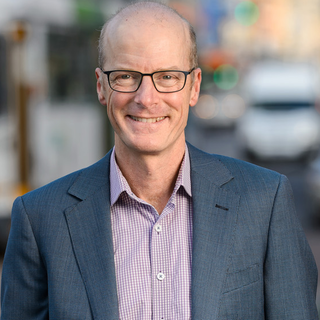
BDSM is a variety of often erotic practices or roleplaying involving bondage, discipline, dominance and submission, sadomasochism, and other related interpersonal dynamics. Given the wide range of practices, some of which may be engaged in by people who do not consider themselves to be practising BDSM, inclusion in the BDSM community or subculture often is said to depend on self-identification and shared experience.
In psychology, libido is psychological drive or energy, usually conceived as sexual in nature, but also includes other forms of desire. The term was originally used in psychoanalytic theory, where Freud began by employing it in reference to the energy of the sexual drive, later generalising the concept to refer to the fundamental energy of all expressions of love, pleasure, and self-preservation.

Sexual intercourse is sexual activity involving the insertion and thrusting of the penis inside the vagina for sexual pleasure, reproduction, or both. This is also known as vaginal intercourse or vaginal sex. Other forms of penetrative sexual intercourse include anal sex, oral sex, fingering and penetration by use of a dildo. These activities involve physical intimacy between two or more individuals and are usually used among humans solely for physical or emotional pleasure and can contribute to human bonding.
Promiscuity is the practice of engaging in sexual activity frequently with different partners or being indiscriminate in the choice of sexual partners. The term can carry a moral judgment. A common example of behavior viewed as promiscuous by many cultures is the one-night stand, and its frequency is used by researchers as a marker for promiscuity.

Sexual attraction is attraction on the basis of sexual desire or the quality of arousing such interest. Sexual attractiveness or sex appeal is an individual's ability to attract other people sexually, and is a factor in sexual selection or mate choice. The attraction can be to the physical or other qualities or traits of a person, or to such qualities in the context where they appear. The attraction may be to a person's aesthetics, movements, voice, or smell, among other things. The attraction may be enhanced by a person's adornments, clothing, perfume or style. It can be influenced by individual genetic, psychological, or cultural factors, or to other, more amorphous qualities. Sexual attraction is also a response to another person that depends on a combination of the person possessing the traits and on the criteria of the person who is attracted.
Pornography addiction is the scientifically controversial application of an addiction model to the use of pornography. Pornography may be part of compulsive sexual behavior with negative consequences to one's physical, mental, social, or financial well-being. While the World Health Organization's ICD-11 (2022) has recognized compulsive sexual behaviour disorder (CSBD) as an "impulsive control disorder", CSBD is not an addiction, and the American Psychiatric Association's DSM-5 (2013) and the DSM-5-TR (2022) do not classify compulsive pornography consumption as a mental disorder or a behavioral addiction.

Youth is the time of life when one is young. The word, youth, can also mean the time between childhood and adulthood (maturity), but it can also refer to one's peak, in terms of health or the period of life known as being a young adult. Youth is also defined as "the appearance, freshness, vigor, spirit, etc., characteristic of one, who is young". Its definitions of a specific age range varies, as youth is not defined chronologically as a stage that can be tied to specific age ranges; nor can its end point be linked to specific activities, such as taking unpaid work, or having sexual relations.
Men who have sex with men (MSM) are male persons who engage in sexual activity with members of the same sex. The term was created in the 1990s by epidemiologists to study the spread of disease among all men who have sex with men, regardless of sexual identity, to include, for example, male prostitutes. The term is often used in medical literature and social research to describe such men as a group for research studies. It does not describe any specific sexual activity, and which activities are covered by the term depends on context.

Physical attractiveness is the degree to which a person's physical features are considered aesthetically pleasing or beautiful. The term often implies sexual attractiveness or desirability, but can also be distinct from either. There are many factors which influence one person's attraction to another, with physical aspects being one of them. Physical attraction itself includes universal perceptions common to all human cultures such as facial symmetry, sociocultural dependent attributes and personal preferences unique to a particular individual.

Obtaining precise numbers on the demographics of sexual orientation is difficult for a variety of reasons, including the nature of the research questions. Most of the studies on sexual orientation rely on self-reported data, which may pose challenges to researchers because of the subject matter's sensitivity. The studies tend to pose two sets of questions. One set examines self-report data of same-sex sexual experiences and attractions, while the other set examines self-report data of personal identification as homosexual or bisexual. Overall, fewer research subjects identify as homosexual or bisexual than report having had sexual experiences or attraction to a person of the same sex. Survey type, questions and survey setting may affect the respondents' answers.
Health promotion is, as stated in the 1986 World Health Organization (WHO) Ottawa Charter for Health Promotion, the "process of enabling people to increase control over, and to improve their health."
Women who have sex with women (WSW) are women who engage in sexual activities with other women, whether they identify themselves as lesbian, bisexual, or heterosexual, or dispense with sexual identification altogether. The term WSW is often used in medical literature to describe such women as a group for clinical study, without needing to consider sexual self-identity.
Rape trauma syndrome (RTS) is the psychological trauma experienced by a rape survivor that includes disruptions to normal physical, emotional, cognitive, and interpersonal behavior. The theory was first described by nurse Ann Wolbert Burgess and sociologist Lynda Lytle Holmstrom in 1974.

The prevalence of circumcision is the percentage of males in a given population who have been circumcised, with the procedure most commonly being performed as a part of prophylactic healthcare, a religious obligation, or cultural practice. Yosha & Bolnick & Koyle (2012) states that the global incidence of circumcision has risen and seems likely to continue to do so during the "first half of the twenty-first century".

Prostitution or sex work in Australia is governed by state and territory laws, which vary considerably. Federal legislation also affects some aspects of sex work throughout Australia, and of Australian citizens abroad.
Sex after pregnancy is often delayed for several weeks or months, and may be difficult and painful for women. Painful intercourse is the most common sexual activity-related complication after childbirth. Since there are no guidelines on resuming sexual intercourse after childbirth, the postpartum patients are generally advised to resume sex when they feel comfortable to do so. Injury to the perineum or surgical cuts (episiotomy) to the vagina during childbirth can cause sexual dysfunction. Sexual activity in the postpartum period other than sexual intercourse is possible sooner, but some women experience a prolonged loss of sexual desire after giving birth, which may be associated with postnatal depression. Common issues that may last more than a year after birth are greater desire by the man than the woman, and a worsening of the woman's body image.

In American slang, baseball metaphors for sex are often used as euphemisms for the degree of physical intimacy achieved in sexual encounters or relationships. In the metaphor, first prevalent in the aftermath of World War II, sexual activities are described as if they are actions in a game of baseball. Baseball has also served as the context for metaphors about sexual roles and identity.
Promiscuity tends to be frowned upon by many societies that expect most members to have committed, long-term relationships. Among women, as well as men, inclination for sex outside committed relationships is correlated with a high libido, but evolutionary biology as well as social and cultural factors have also been observed to influence sexual behavior and opinion.
Anastasia Powell is a feminist criminologist at RMIT University, Melbourne, Australia.

Tim Read is an Australian politician. He has been a Greens member of the Victorian Legislative Assembly since November 2018, representing the seat of Brunswick. A former general practitioner, and medical researcher with a PhD on the epidemiology of sexually transmitted infections, he is the current Victorian Greens Spokesperson for Health, Justice, Integrity and Science.









